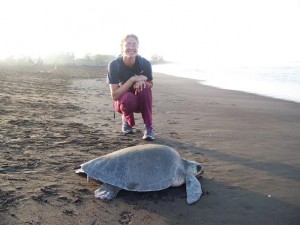Over the course of Trump’s presidency, immigration policies are among the strictest the country has experienced. The effects of this are felt strongly on U.S. farms, which have relied on foreign migrant labor for decades. While the H-2A program, a special farm worker visa, is in place to support migrant laborers, there are not enough visas to meet the need of the expansive farming industry.
Who is taking their place? The incarcerated.
Multiple states have passed anti-immigration laws that mirror federal regulations and emulate Arizona’s much contested S.B. 1070. The result is a sudden scarcity of migrant laborers who no longer risk the border crossing due to fear and distrust of public institutions. To fill the shortfall, Idaho state Senator Patti Anne Lodge authored a bill in 2014 that allows Idaho farms to use prison inmates as labor, having seen first-hand the untended and rotting fruits across her state orchards. Putting prisoners to work, she believes, will be a form of rehabilitation for the inmates: “ninety-five percent [of prisoners] do get out, and they are given a better chance to come back into the community and become productive, accountable people.” Senator Lodge sponsored a second bill that passed in 2018, expanding the program to more agricultural sectors.
Critics have denounced Senator Lodge’s perspective on the prison-to-farm program. They argue that the program is a shocking return to convict leasing for agriculture, a post-Civil War practice that replaced slaves with incarcerated people. The practice was abandoned by both federal and state governments in the 20th century after becoming infamous for the brutal conditions imposed on majority black inmates.
The current farm-to prison program is not unique to Idaho. There are currently over 30,000 incarcerated people working on U.S. farms, many making less than a dollar a day. The private prison system is pocketing the profits of their work. California’s correctional industry, for example, made over $2 million from such agriculture and food programs between 2015 and 2016. Businesses are profiting too: the Arizona Corrections Industry has a $5 million labor contract with Hickman’s Family Farms—the 4th largest U.S. egg producer—and a $2 million labor contract with Nature Sweet which established a base pay for inmates of $2.00/hour.
You might think the same laws that banned nineteenth-century convict leasing would apply here. You’d be wrong. While the current prison-to-farm programs have been admonished by the National Association for the Advancement of Colored People (NAACP), proponents of the programs argue that there is no racial bias behind the program, corporal violence is prohibited, there is sufficient food and housing, and work days don’t exceed 8-hours. Thus, it is different this time.
Taking a look at who makes up the incarcerated population, it might not be so different after all. Compared to white Americans, African Americans are incarcerated at 5.1 times and Latinos 1.4 times more frequently. These numbers are the result of decades of racist and minority-targeting policies from Jim Crow to the 1994 “tough on crime” law to stop-and-frisk. In Georgia alone, where prisoners labor to harvest Vidalia onions, 60%of inmates are black and 35% are white. While the national demographics of inmate farm workers are not readily available, given the breakdown of the larger prison system, it is likely predominantly non-white populations.
What’s clear is that farm labor is delegated to groups that have been historically exploited. The problem of Idaho’s unpicked apples isn’t a farm labor shortage, but a documented worker shortage. If workers were given the opportunity to work safely with authorization and without fear of deportation, Senator Lodge would not have seen a landscape of unproductivity and abandonment. What’s more, the benefits of “fresh air” and “hard work” for inmates, touted by Lodge and other legislators, shouldn’t be considered replacements for programs whose primary focus is to improve inmates’ lives—high school and college education, vocational training, and alcohol/drug dependency, counseling, rehabilitation, and awareness programs. Prisons should put rehabilitation first, not the profits of industrial farms and private prisons.
As Sarah Evans of Food First, a research, education, and activist organization aimed at addressing food justice, writes, “Fair wages, worker protections, and dignity is the answer to labor shortages, and should be the bedrock of a just food system.”














